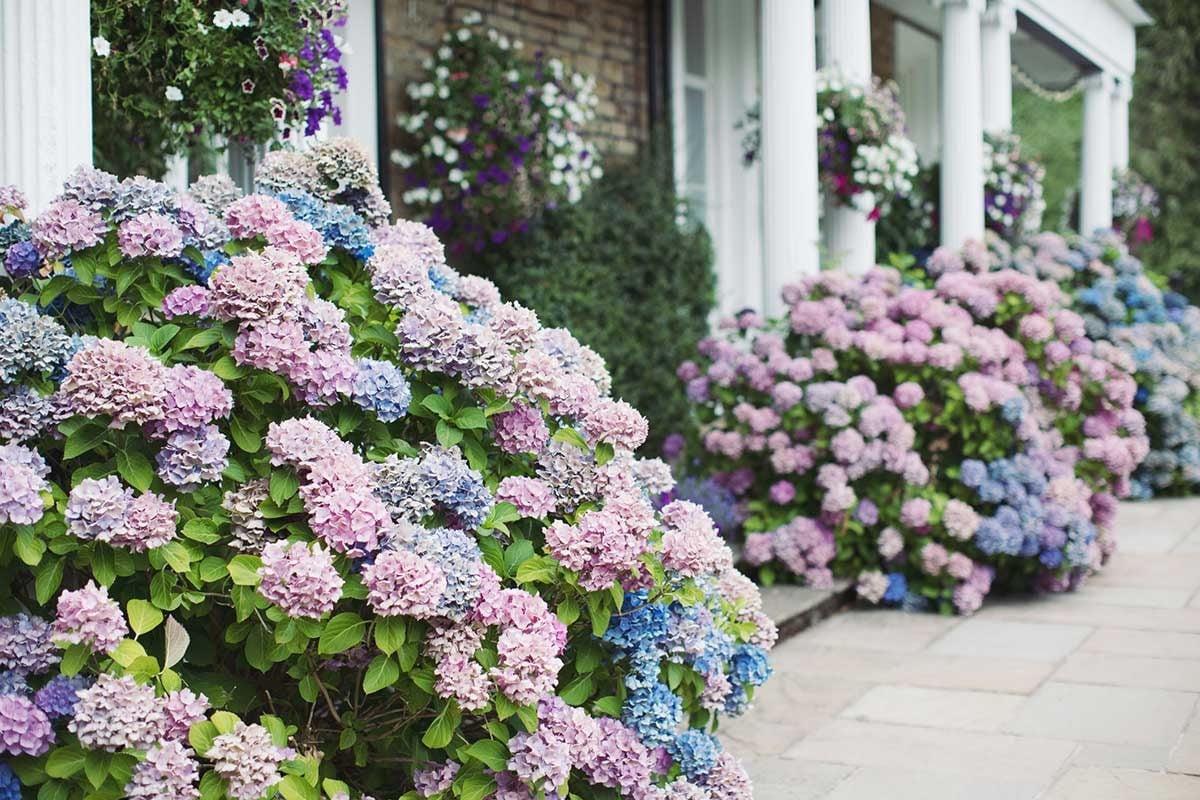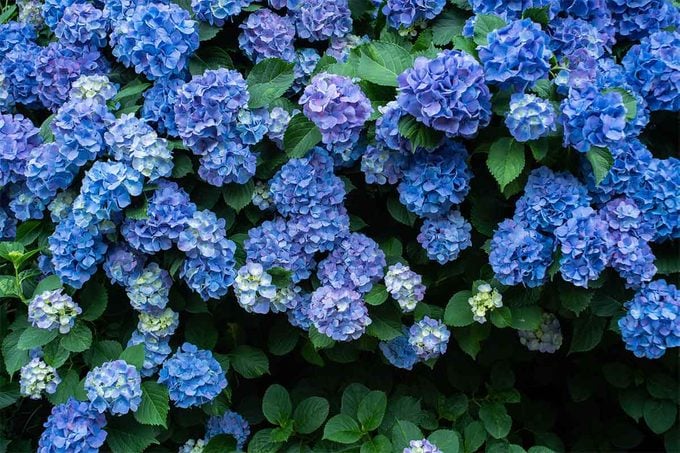With their big, bold blooms and an appreciation for afternoon shade, hydrangeas are a well-loved showstopper. Here's how to care for hydrangeas.

Tips for Growing and Caring for Hydrangeas

Supersized puffs of hydrangea blooms and a dash of hocus-pocus with color-changing petals make this one of the most sought-after flowering shrubs for home landscaping. A University of Tennessee Extension Service study estimates more than 10 million hydrangea plants are sold each year, accounting for more than 13 percent of U.S. shrub sales.
On This Page
How to Plant and Grow Hydrangea
If you’re ready to jump on the hydrangea bandwagon, these tips will help ensure success.
Climate and Location
Hydrangea can thrive in a wide range of climates from U.S. Department of Agriculture Plant Hardiness Zones 3 to 11, but verify the specifics for the variety you choose.
Make sure you have a location that allows the hydrangea shrub to expand by several feet and reach its top height without blocking walkways or windows. Some are tall plants, growing six to 10 feet wide or tall.
Sun and Shelter
Most hydrangea require at least six hours of sunshine a day. Check the tags for your specific variety. Ideally, most prefer sun in the morning and cooling shade in the afternoon. Plant your hydrangea in a spot where it won’t get battered by branch-snapping winds.
Soil Preparation
If you have a gallon-sized plant, dig a hole about two feet across and one- to two-feet deep, so the soil is nice and loose. Make sure you read the tag for your hydrangea’s height and width. For the best success, add organic matter, such as compost, to the soil to help retain moisture.
How to Care for Hydrangea
Watering
Hydrangea shrubs like to be watered thoroughly at least once a week or more frequently in hotter, drier stretches. If you see leaves start to droop, water right away.
Fertilizing
Pick a good all-around fertilizer and apply in early spring (usually March) when hydrangeas are starting to leaf out. Follow instructions and don’t over-fertilize or you may have more leaves than flowers. Apply fertilizer again in May and July.
Removing Spent Blossoms
With a mophead hydrangea, you can remove the blooms after they’re spent in the summer. This encourages blooms for the next year. For some varieties, such as the Endless Summer line, wait until late winter or early spring to trim the spent flowers.
Pruning
To prune a hydrangea that’s losing its shape or is less prolific in blooms, remove older branches by cutting them close to the ground and giving the shrub some more air circulation. This lets more light reach the younger blooming branches. You can also trim any branches to reshape a shrub that’s getting gangly or lopsided.
Winter Preparation
Mound up leaves or other mulch about eight inches around the shrub after the first frost. If you have a young hydrangea, you can encircle it with a screen or fencing that protects it from nibbling critters. That also allows you to build up a higher level of leaves for better winter insulation. If there’s a sudden cold snap in the fall or spring, you can also cover your shrub with an old sheet to protect it overnight.
How to Get Blue Hydrangea Flowers

Pick the Right Variety
The first step to achieving coveted blue hydrangea blossoms is to make sure you choose a bigleaf variety that will be pink or blue, depending on your soil pH. Look for choices such as Nikko Blue, Blauer Prinz or varieties with the Endless Summer line of hydrangeas.
Alter Your Soil PH
To check the acidity in your soil, which determines whether you can grow the blue hydrangea, look for soil-monitoring meters that can also measure moisture and light throughout the season. If your soil is alkaline ( pH 6.0 or higher), you’ll likely have pink hydrangea blooms. If you add aluminum sulfate to create a more acidic soil (pH 4.5 to 5.5), you can achieve lavender or the sought-after blue. Look for premixed soil additives, such as Jobe’s Organics Soil Acidifier or Bailey’s Color Me Blue to make it easier.
No matter which color you achieve, hydrangea shrubs add a splash of beautiful blooms — even the cream-colored ones — and raise the curb appeal of your home.




















